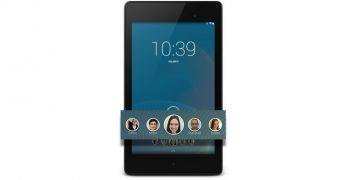Google has been investing in education for a long time now, through the various programs it launched. And back in November, we saw the company releasing tablets with Google Play for Education, targeted at kindergarten to 12th grade students.
Google Play for Education is a big part of Google’s strategy of trying to dominate the educational market, where Apple is seen as the key player for the most part.
The search giant is trying to push both Android and Chrome OS in the classroom, and by virtue of the latter, it’s actually doing quite a decent job.
Now Google adds a new feature to its educational program, by allowing tablets to be shared among five different students.
While schools and educators might want each student to take advantage of their own machine, it is not always practical to start out doing things like this. Furthermore, it’s not beneficial asking multiple pupils to log in into the same accounts, either.
So the solution Google has come up with is providing students with tablets which can support the creation of multiple accounts. In this case, up to five different ones.
Therefore, for those educational establishments that can’t squeeze the expense of purchasing individual tablets for each student, Google’s solution might help deliver the needed technology boost to the classroom.
Basically, one tablet per classroom should be enough, provided group of students each take turns in using the device.
The initiative is also meant to provide testing grounds for schools and help system administrators decide whether buying hardware for every student might prove beneficial for the purposes of their educational establishment or not.
As before, Google Play for Education tablets can be “bumped” together, but now there’s an extra option that lets you specify the number of students who’ll be taking advantage of the tablet (up to five).
To complete the setting-up process, each student will have to sign up on the configured tablet and then choose a special pin code that will allow them to individually access the device.
After that, each student is free to enter their individual account to find their respective stuff. This system should make collaborative activities like class projects that make use of apps like Docs, Drive and so on, a breeze.
Educators will also be able to take advantage of Google Play for Education, by virtue of easily sending students apps, books, videos and other materials tailored to their specifics needs and interests.

 14 DAY TRIAL //
14 DAY TRIAL //